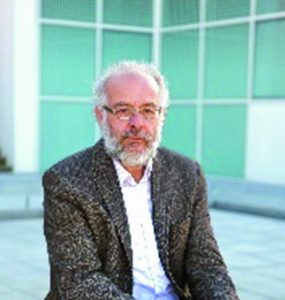Dr Jean-Luc Patry | Dr Angela Gastager | Barbara Fageth – Improving Education Through Cultivating Pedagogical Tact
Pedagogical tact is broadly defined as a concept that addresses how teachers transfer educational theories to their teaching practice, in order to achieve their educational goals (which include students’ learning) most successfully. Although this concept has been widely referred to in past research, it remains very complex and difficult to define. To better delineate this concept, researchers at the University of Salzburg and the University College of Teacher Education Styria have developed a new theory of pedagogical tact and explored its validity in school and university settings. By better conceiving this concept, the researchers hope to help educators to cultivate pedagogical tact, enhancing the academic development of their students.
A Complex Theoretical Concept
To teach effectively, educators must be able to translate the educational theories they learned during their training into their teaching practices in the classroom. This ability is far from insignificant, as past research has highlighted a considerable disconnect between theory and practice. This disconnect has been addressed in the works of numerous pedagogues in the late 18th and early 19th century, including Ernst Christian Trapp, Johann Friedrich Herbart, and Friedrich Schleiermacher.
First introduced by Herbart in 1802, ‘pedagogical tact’ is one of the most widely discussed concepts when it comes to transferring educational concepts or theory into practice. In order to do this effectively, educators need to adopt a certain ‘tact’, which ultimately allows them to adapt a given educational theory to meet the requirements of individual learners or classrooms. For example, a tactful teacher would be able to accurately assess the needs of individual learners in a classroom, and make appropriate decisions to allow the students to get the most out of the lesson. Such tactful decisions would be based on educational theories, among other things.
Although Herbart’s notion of ‘tact’ is widely cited and discussed in education studies, his work only provides a few vague theoretical elements to describe it. Other notable experts in the field, such as Herman Nohl and Jakob Muth, presented more sophisticated approaches to define this idea of ‘tact’, yet they also failed to provide a satisfactory and comprehensive account of it.
Dr Jean-Luc Patry and Barbara Fageth at the University of Salzburg, along with their collaborator Dr Angela Gastager at the University College of Teacher Education Styria in Austria, have built on these approaches to develop a theory of pedagogical tact that capitalises on previous concepts, including empirical research in psychology and education. The team hopes that their new theory will guide educators in effectively transferring educational theories in the classroom, which will ultimately enhance the preparation and academic development of trainee teachers and students.

Theory and Practice
To develop their theory of pedagogical tact, Dr Patry, Dr Gastager and Fageth first set out to achieve a thorough understanding of the relationship between educational theory and teaching practice. The researchers found that there are several reasons why educational theories are difficult to transfer in the classroom, some of which are outlined below.
Firstly, theories comprise statements, while practice involves action; thus, there cannot be a direct relationship between them. Despite the absence of a direct link, actions can be guided by theories, if the latter are incorporated into an educator’s system of subjective theories. ‘This incorporation will never fully match the corresponding [educational] theories,’ the researchers explain in one of their papers. For example, a teacher might only learn certain parts of a given educational theory, and these parts may be simplified compared to the original theory.
Secondly, as highlighted by the researchers, theories have a certain degree of generality, which allows them to be applied in a variety of different situations. However, the more general a statement is, the less likely it is to provide concrete or detailed instructions for action.
In addition, to achieve different goals simultaneously, a teacher might need to combine different theories, some of which might not be compatible. A fourth reason is that social behaviour, such as that taking place in a classroom, is often situation-specific, while most educational theories do not address the specifics of different educational settings. These are just a few of the problems addressed by the researchers in their work.
Existing Theories of Tact
Countless researchers have attempted to address the transfer from theory to practice in their work, yet Herbart’s has been the most influential approach so far. According to Herbart, the effectiveness of a teacher depends on ‘how well tact forms within him or her’.
Herbart, Nohl, Muth and others suggest that tact can only be attributed to an action if it is aligned with some ethical reference standards. However, it is unclear whether these standards are defined by authorities (such as the school principal or parents) or by the teacher’s own value system. Moreover, none of these approaches indicates whether situation specificity plays a role in tact, and if it does, then how.
Other frameworks, dubbed ‘action theoretical models’, integrate tact with other pedagogical concepts, such as the Cognitive-Affective Personality System (CAPS), which is a personality theory proposed by Walter Mischel and Yuichi Shoda in 1995. Although many adaptations of Herbart’s notion of tact provide valuable insight into this fairly elusive concept, all of them are incomplete, as they fail to adequately address the key issues with translating educational theory into practice.

A New Theory of Pedagogical Tact
The new theory of pedagogical tact developed by Dr Gastager, Fageth and Dr Patry revisits some of the concepts introduced by Herbart, Nohl and Muth, and tries to better conceive the ways in which pedagogical tact can help teachers to translate educational theory into practice. According to the researchers, a theory of tact should take a number of elements into account, including the theories used by a particular teacher and his or her non-verbal expressions, sensitivity, intuition, experiences, empathy and authenticity. ‘These elements need to be put into a theoretical framework that addresses the relationships between them,’ the researchers explained in one of their papers.
In their work, the team identified CAPS as the best theoretical framework for developing a theory of tact. The CAPS framework lists six dimensions that can account for situation-specific behaviour: competence, perception categories, expectations, goals, self-regulatory strategies and emotions.
Each of these dimensions comprises several elements, hence the CAPS framework accounts for the pursuit of very different educational goals simultaneously. In addition, the framework can easily be adapted to fit different cases, as different dimensions can be activated according to the requirements of a particular situation. The researchers found that CAPS can be easily adapted into a theory of pedagogical tact, particularly by focusing on how its different dimensions interact when a teacher is deciding how to act in a particular situation.
Testing the Theory
Although the units of the original CAPS framework are pretty straightforward, when applying it to tact, one might need to consider others tact-specific elements or relationships between different dimensions. To develop an exhaustive theory of tact, therefore, the researchers decided to test different hypotheses in a series of studies carried out in Austrian secondary schools, universities and kindergartens.
In a first study, they recorded and transcribed a counselling session between a counsellor and her client, then analysed the thoughts presented in it using a framework containing some elements of their theory of tact. In another study, students at the University of Salzburg completed practical and interactive exercises, and were then asked to analyse the content of these tasks using a coding handbook based on the theory of tact. In yet another study, the team video recorded experienced kindergarten teachers as they taught in various situations, and analysed the teachers’ accounts of the interactions with the children based on the recordings.
Then, in a pilot study, the researchers evaluated aspects of their theory at a secondary school in Austria, by investigating the teaching practices and the related teacher thoughts of three mentors and five of their trainee teachers. Subsequently, 13 senior teachers and 21 trainee teachers were analysed with the same method as above, yet using a qualitative-quantitative mixed analysis approach. This study allowed the researchers to compare the ways in which novices and experts are able to translate educational theories into their teaching practices, using an assessment tool based on the team’s new theory of pedagogical tact. This helped them to evaluate the validity of their framework and assess its tact-relevant dimensions under the assumption that senior teachers act more tactfully than trainees.
The studies carried out by Dr Patry and his colleagues are not yet conclusive; thus, further testing is needed to ascertain the validity of their theory. Nonetheless, these studies provided valuable insight and allowed them to test some elements of their framework. For instance, the researchers found that their CAPS framework might be applicable in a variety of situations, as different dimensions can be activated according to the requirements of the situation at hand. This sets their theory apart from previous approaches to pedagogical tact, which did not address situation-specific requirements.

A More Useful Vision of Pedagogical Tact
The theory proposed by Fageth, Dr Patry and Dr Gastager offers an account of pedagogical tact based on empirical and detailed analyses of actions in situations, hence pinning down a concept that has remained elusive for years and rendering it accessible for empirical research. In the future, the researchers hope to test different aspects of their theory further in a variety of educational settings.
For instance, they would like to use their theory to study how educational theories can be effectively translated into practice, as well as to develop instruction frameworks that could help to better understand and assess an educator’s teaching practices. In years to come, the researchers will also use their theory to develop a practice-oriented book that can guide educators in fostering more ‘tactful practices’.
The overarching goal of this project is that of improving the practice of professionals in the field of education. To share their vision with other educators, the researchers published a book and many articles and presented their findings at various education conferences, including the EAPRIL (European Association for Practitioner Research on Improving Learning) and EARLI (European Association for Research in Learning and Instruction) conferences.
Reference
https://doi.org/10.33548/SCIENTIA385
Meet the researchers

Dr Jean-Luc Patry
Department of Education
University of Salzburg
Salzburg
Austria
Dr Jean-Luc Patry holds a PhD in science and a certificate for teaching biology from the Swiss Federal Institute of Technology (ETHZ). Before completing his degree, he worked as an assistant at ETHZ, and then taught at the University of Fribourg for almost ten years. He also worked as a visiting scholar at Stanford University and Lehigh University, before joining the Department of Education at the University of Salzburg in 1993. In addition to his teaching posts, he has been an active member of several committees and associations, including the Swiss and Austrian Associations for Research in Education.
E: jean-luc.patry@sbg.ac.at
W: https://www.uni-salzburg.at/index.php?id=21788
Dr Angela Gastager
Institute for Educational Sciences
University College of Teacher Education Styria
Graz,
Austria
Dr Angela Gastager began her career in 1982 as a primary school teacher – a post that she covered until 1994. Between 1992 and 1994 she pursued studies in Gestalt Educational Counselling in Salzburg and Graz. She then attained a Master’s degree and a PhD in Education from the University of Salzburg. She worked in several research and teaching assistant positions at the University of Salzburg and University of Education in Weingarten in Germany, where she was also certified in adult education. In 2009 she became a staff member and professor at the Institute for Educational Sciences at the University College of Teacher Education Styria, Graz, where she currently works.
E: angela.gastager@phst.at
W: https://www.phst.at/phst/organisation-leitung/institute-praxiswerkstaetten/institut-fuer-bildungswissenschaften/hs-prof-mag-dr-angela-gastager/

Barbara Fageth
Department of Education
University of Salzburg
Salzburg
Austria
Barbara Fageth has been involved with FWF project ‘Pedagogical Tact’ since 2015 and is mostly responsible for the collection and analysis of data within elementary education settings. She has taught in elementary schools for several years and currently works at the Private Pedagogical University of the Diocese of Linz. Before that, Fageth was a member of the team managing the University of Salzburg’s Elementary Education course. Between 2012 and 2014, she also worked as a junior researcher at the Federal Institute for Educational Research (BIFIE). She is set to complete her doctoral studies in 2019.
E: barbara.fageth@ph-linz.at
W: https://uni-salzburg.elsevierpure.com/de/persons/barbara-fageth-5
FUNDING
Austrian Science Foundation



Creative Commons Licence
(CC BY 4.0)
This work is licensed under a Creative Commons Attribution 4.0 International License. 
What does this mean?
Share: You can copy and redistribute the material in any medium or format
Adapt: You can change, and build upon the material for any purpose, even commercially.
Credit: You must give appropriate credit, provide a link to the license, and indicate if changes were made.
More articles you may like
Dr Lifei Wang | Can Species Distribution Models Inform Us About Future Ecosystems?
The world is buzzing with news about how human activities and climate shifts are reshaping our ecosystems. Have you ever wondered how life will adapt to this rapidly changing world? Ecologists might be able to predict how different species will live in future using computer simulations. Dr Lifei Wang at the University of Toronto Scarborough investigates how different stimulations work under varying conditions to provide new insights into what may lie ahead.
Dr Yong Teng | Improving the Outlook for Head and Neck Cancer Patients
Dr Yong Teng at the Emory University School of Medicine is working with colleagues to overcome the high mortality of individuals diagnosed with cancers affecting the head and neck. One of his approaches is based on understanding the particular mechanisms of the ATAD3A gene, which new insights suggest are closely related to cancers affecting the head and neck.
Dr Tsun-Kong Sham – Dr Jiatang Chen – Dr Zou Finfrock – Dr Zhiqiang Wang | X-Rays Shine Light on Fuel Cell Catalysts
Understanding the electronic behaviour of fuel cell catalysts can be difficult using standard experimental techniques, although this knowledge is critical to their fine-tuning and optimisation. Dr Jiatang Chen at the University of Western Ontario works with colleagues to use the cutting-edge valence-to-core X-ray emission spectroscopy method to determine the precise electronic effects of altering the amounts of platinum and nickel in platinum-nickel catalysts used in fuel cells. Their research demonstrates the potential application of this technique to analysing battery materials, catalysts, and even cancer drug molecules.
Dr Michael Cherney – Professor Daniel Fisher | Unlocking Woolly Mammoth Mysteries: Tusks as Hormone Time Capsules
The impressive tusks found on proboscideans (the order of mammals that includes elephants, woolly mammoths, and mastodons) are like time capsules, preserving detailed records of their bearers’ lives in the form of growth layers and chemical traces. Frozen in time for thousands of years, these layers can unlock secrets about the lives of long-extinct relatives of modern elephants. Dr Michael Cherney and Professor Daniel Fisher from the University of Michigan used innovative techniques to extract and analyse steroid hormones preserved in woolly mammoth tusks. This ground-breaking work opens new avenues for exploring the biology and behaviour of extinct species.





